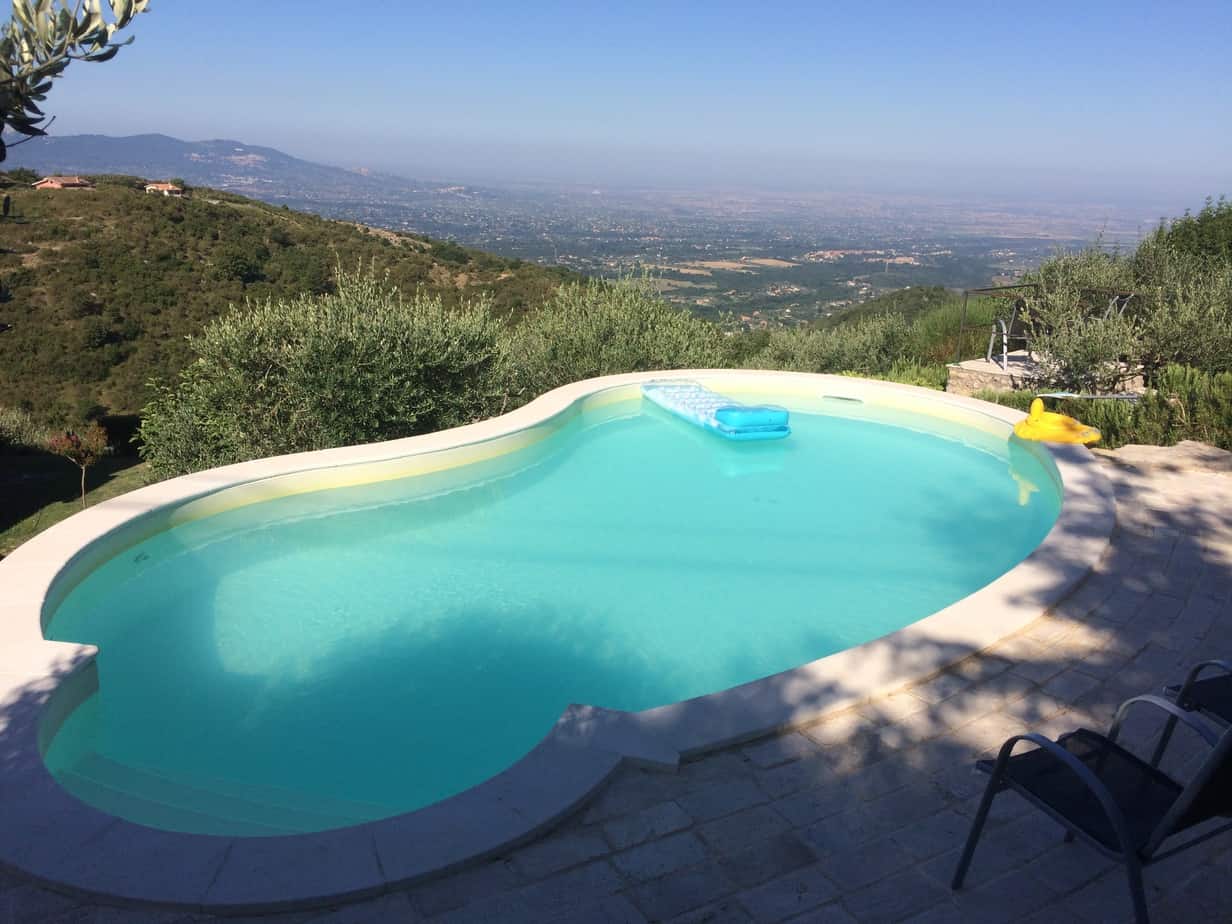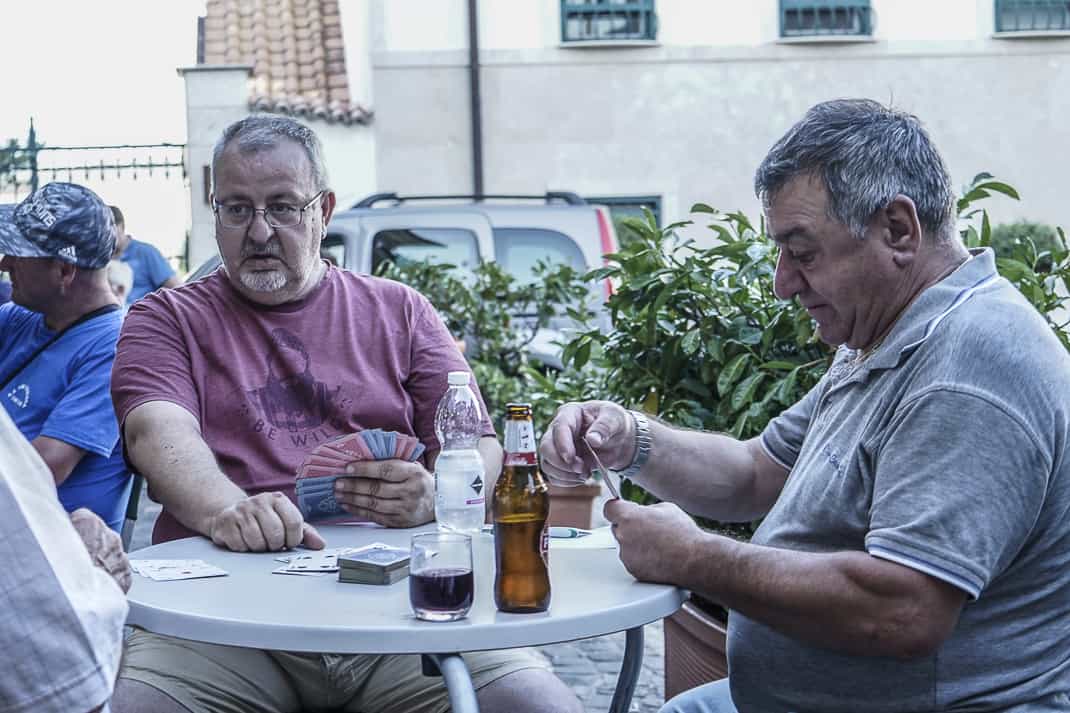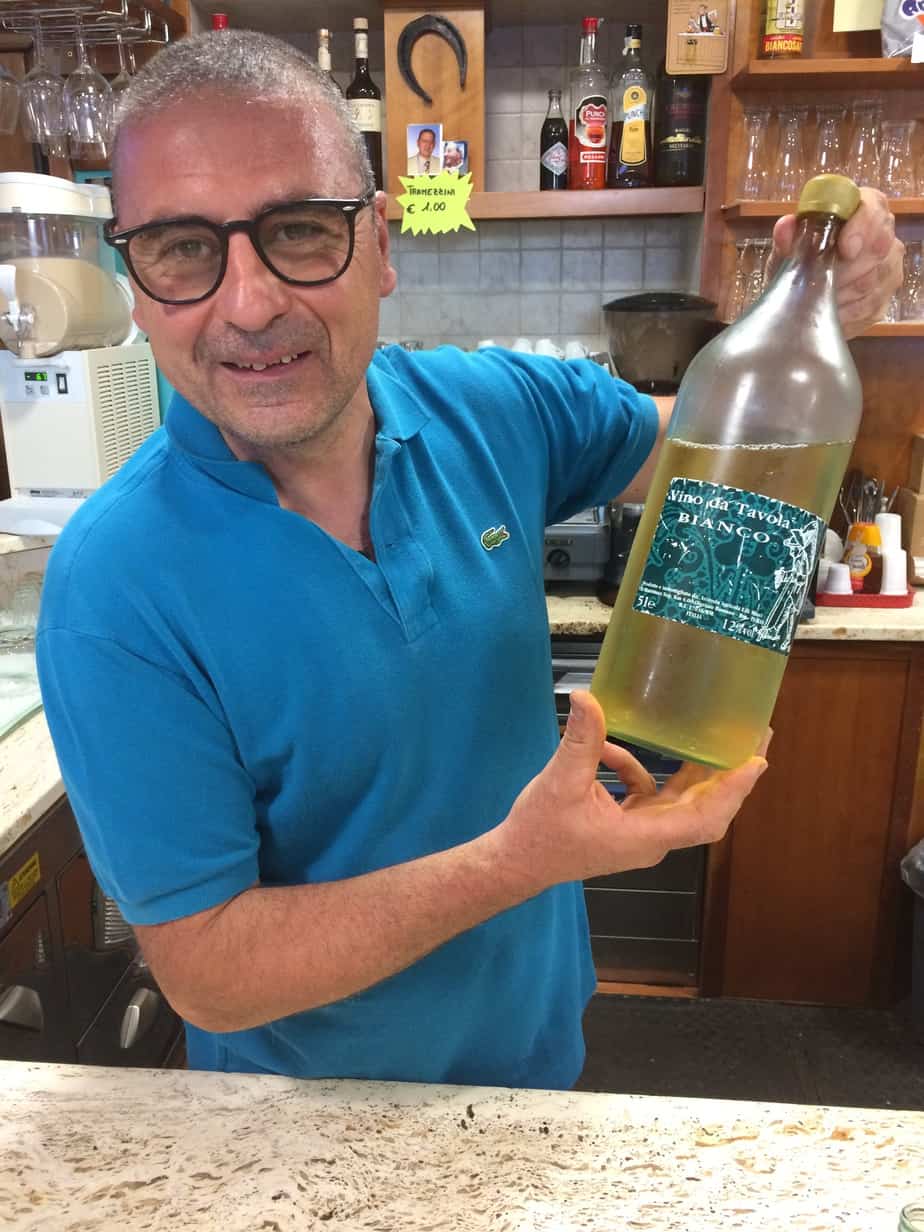Lazio wines rising on the Italian, international wine scenes

FRASCATI, Italy — Daniele Cernilli remembers when he was a little boy in Rome 50 years ago, back when Italian cinema was booming and so was the economy. His father used to send him to the local osteria, a small, very traditional family run restaurant, to get a big jug of wine. Through most of the 20th century, Romans bought wine in bulk, kind of like how they buy water now except in bottles the size of small oil drums. It was quantity, not quality. Little Daniele could tell just by smelling the vinegar level.
“The color of the wine was orange, not yellow,” Cernelli wrote in an email. “A wine like that nowadays would be undrinkable.”
Cernelli, known around the world as Doctor Wine, knows more than just local wine. Decanter magazine ranked him among the 50 most influential people in the world of wine (www.doctorwine.it) every year from 2007-09. He’s an international wine judge and his five books include “The Ultimate Guide to Italian Wine 2018,” the bible I used to navigate my new wonderful world of wines from Rome’s Lazio region.
A significant draw for me retiring to Rome five years ago was having the best wines in the world within Italy’s borders. Since moving here, one of my most pleasant surprises is some of Italy’s best wines are within the borders of Lazio.
Like Rome’s pizzas and gelato, Lazio wines are the most underrated in Italy.

Crisp white wines. Rich, bold reds. When I go out, wines like Cesanese and Trebbiano and Bellone have entered my lexicon. I’ve even found a high-end, romantic, reasonably priced wine bar in Rome devoted entirely to Lazio wines. VyTA, just off Via del Corso, has become my must stop when I go into the center.
But to get a true taste of Lazio wines, I had to go into the heart of Lazio wine country. I rented a car and in only about 30 minutes Marina and I found ourselves standing in a vineyard of 35 acres of grape vines high in the green, rolling Alban Hills southeast of Rome. This is Frascati, for years home of the only Lazio wine known outside Italy. I remember my first stint in Rome from 2001-03. I’d have picnics in this villa-laden town of 22,000 people. If there’s a better picnic wine than the crisp, cool Frascati white I always bought, I didn’t know it until now.
Showing us around the vineyard was Antonio Benedetti, a tall, suave, worldly sommelier and chef who returned last year after eight years cooking in restaurants from South Africa to London and two as a sommelier in Mazzo in Rome. He’s part of the 13th generation of Benedettis who have run Cantine Santa Benedetta, the oldest winery in Frascati going on 320 years.

Like Daniele, Antonio, 29, knows the old Lazio wine stories. It wasn’t too long ago when this region supplied Rome’s massive population and its thirst for wine. Wine is one of Italy’s five major food groups and with a 1970 population of 2.8 million, the same as today, quality took a back seat to quantity.
“The first reason is the fact that everything that was made as a mistake, they made in this area,” he said. “Massive production. The big problem here is many, many producers used to have from 10 acres to 200 acres. They helped the big companies and their production.”
Not far away near the town of Zagarolo, Cantina del Tufaio (www.cantinadeltufaio.it) has been around since 1881. So has the big house where Marina and I visited with owner Claudio Loreti who served us a lovely Malvasia-Savignon Blanc blend and a very smooth Merlot. He said local drinking habits were hard to break. He told us a story from the 1940s when his father and father’s cousin made a batch of wine with 13 percent alcohol, high by local standards back then but normal today.
They carted it to a Rome restaurant where the owner took one taste and all but spit it out. So the pair went back to their winery and cut the wine with water, dropping the alcohol level to 10 percent.

Then they returned.
“They gave the owner the vino with water and the owner said, ‘Buono! Good! I like it!’” Loreti said.
Silvia Brannetti of Riserva della Cascina (www.reservadellacascina.it) has a winery within the Rome city limits. It sits right off Ostia Antica, the road where Spartacus’ slaves were crucified during their rebellion (See Spartacus: Failed labor movement). Her grandfather made wine when she was little.
Needless to say, it never made Decanter magazine.
“We call it Vino Scuzzo,” she said. “It’s the kind of wine you come and pick up with your barrel. It was not bad. I know it wasn’t the sort of wine I’d call quality wine. He went around the city and tried to sell it.”

In Lazio these days, “not bad” isn’t good. The whole region’s wine makers are pushing out the big wine bottles hanging in wicker baskets on farms and replacing them with elegant displays back-lit in tony Rome enotecas.
“We’re trying to make something that is good and comparable to products in the rest of Italy,” Brannetti said.
What changed? The city of Rome for one. In 1940, Rome’s population was less than a million. People from around the country, particularly after World War II, descended on the capital for work, for glamour, for food. They didn’t come for wine.
“A lot of people prefer to drink wine from the original family’s birthplace,” Cernilli wrote. “So who came from Campania drink Campanian wines. Who come from Abruzzo prefer Montepulciano, etc. etc.”

Also, as wineries got handed down, younger minds took over. Instead of producing for bigger companies, they started making their own. It turned about 20-30 years ago, coinciding also with the increase in wine-making technology. In Tuscany, you don’t see many big bottles of Chianti in wicker baskets anymore. Technology improved without raising the production costs. Now you get excellent Chianti Riservas for very reasonable prices.
The same thing happened in Lazio.
“It’s changing,” Benedetti said. “It’s coming back in a great quality way. People have their own vineyard. They do their own wine. I mean small production for 20,000 to 100,000 bottles.”
Lazio wines have a built-in advantage. Most of the soil for the vineyards is volcanic. It’s more natural, meaning they don’t have to add the sulphites and preservatives that American wines do. Those are the ingredients that give you hangovers.

Lazio wines are so natural, irrigation is illegal. Actually, there is no need. The volcanic soil can absorb a lot of water and release it when the soil around it is dry.
“It’s amazing,” Benedetti said. “The minerals. The potassium. It’s so rich.”
The world is starting to discover Lazio wines. Before, Frascati was better known in Belgium and the United Kingdom than it was in Rome.
Now Lazio wines are going around the world. Thirty percent of Cantine Santa Benedetta’s wines are sold in 47 U.S. states. They also export worldwide. Brannetti travels to wine fairs around the world.
“We’re trying to make something that is good and comparable to products in the rest of Italy,” she said. “For example, I’m going to take part in a fair, the Millizine Beal in Montpellier (France). When people taste my wines, they are shocked: ‘My God, this is Rome? This is Lazio?’”

Keep in mind, wine was invented 6,000 years ago and Lazio has only been in the serious wine retail business for about 30. Barolo from Piedmont, my favorite wine in Italy, has been around since 500 B.C. Cantina Le Macchie (www.catinalemacchie.it) in Rieti, 80 kilometers northeast of Rome, produces about 70,000 bottles a year, sells in Belgium and its marketing people hit every wine event they can in Europe.
Still, many restaurants even in Rome don’t carry Lazio wines.
“We haven’t the denomination,” said Stefano Proietti, marketing manager for Cantina Le Macchie. “Barolo is a big and strong denomination. We are young. In Lazio we need more time, but I hope one day we’ll be as renowned as Barolo.”
***
Lazio may not have the luxurious wineries of Tuscany and Piedmont, where visits are akin to country clubs with better beverages. However, they’re worth visiting for a weekend. Cantine Santa Benedetta’s tasting room is 320 years old. That’s nothing. When we arrived, Benedetti showed off a stone road that borders his vineyard. He has the only winery in Lazio with an Ancient Roman road running through it. I could imagine Julius Caesar stopping his march toward the sea to tip back a glass of red on the very stones I stood on.

Too bad he didn’t have the beautiful room where Benedetti took Marina and me. The room was all polished wood with seven glass chandeliers and antique furniture. Old portraits hung on the wall. The only other guests were four New Zealand women. It was like our own private wine tasting.
He started us out with his best seller, a 2018 Complexus, a blend of Malvasia and Bellone, an intense yellow wine with hints of peach, pear, apple and lemon. (That’s Benedetti’s description. I can’t pick what fruit is in a wine unless the glass holds an apple core.)
He then gave us a 2016 Tre Vecchie (Three Old Women), a Cabernet Sauvignon-Cabernet Franc blend with tastes of mulberries, blackberries and cherries. Lazio is not known for its red wines but this would go well with any pasta in Italy.

Cantina Santa Benedetta has an added plus. At many wineries’ tastings, the lone food is breadsticks and cheese sticks as if their target customer is Oliver Twist. Cantina Santa Benedetta goes all out on the food. The first item that came out was a high-end bruschetta (pronounced brew-SKETT-ah, Americans, not brew-SCHETT-ah): sourdough bread refrigerated, then grilled to get out the humidity, then baked, leaving charbroiled stripes on the soft dough. Benedetti then poured over it extra virgin olive oil made from some of their 1,000 olive trees. The olive oil, oozing with flavor, soaked deep in the soft, fresh bread. The combination was so tantalizing Marina and I fought over the last piece. It was the best bruschetta of my life.
Then came a pecorino romano cheese with fresh cherry jam, perfect with the Tre Vecchie red wine. Finally, he finished with bruschetta topped with fresh sliced cherry tomatoes.

Our base for our, ahem, “research” was a beautiful bed & breakfast about 20 miles away, even higher in the hills overlooking Rome. Il Casale delle Ginestre (www.ilcasaledelleginistre.com) is a 500-square-meter, 120-year-old stone house with three two-room apartments and two apartments with shared bath.
Our room had a beautiful view of the valley below but nothing like the panoramic view from the swimming pool, the perfect place to “dry” out after an afternoon drinking wine. I spent the rest of the afternoon floating on an inflatable raft looking way down at the Lazio valley below. The only sounds we heard all weekend were the occasional mews of cats and kittens who hang out on the grounds and offer their furry bodies for petting in exchange for a little food.
Breakfast is in a big lounge near a garden. Sitting down we were served a string of biscuits, fresh yogurt with berries, cheese pie, cornettos, cappuccino and orange juice.

Il Casale delle Ginestre (named for the nearby 2,500-foot Mount Ginestro) is technically in the town of Castel San Pietro Romano, a 10-minute drive away that is right out of central casting for 1950s Italian cinema. The town of 870 people is a small, tightly packed collection of narrow roads all leading to a small piazza anchored by the 16th century San Pietro Apostolo church. Inside a huge cross hung over the pews, all overlooked by statues of capuchin monks.
Outside in the piazza, locals sat on stoops under plaques commemorating some of the many films shot in the town, complete with still photos from the film shoots. Ironically, Castel San Pietro Romano was a ruin after World War II and Italian directors flocked here in the mid-20th century for films about economic hardship in Italian villages. The films include “Pane, Amore e Fantasia” in 1953 which won the Silver Bear at the 1954 Berlin Film Festival and earned the best actress award, and breakout moment, for a 26-year-old Lazio gal named Gina Lollobrigida. Today, 92-year-old Lollobrigida is still alive and well in Rome and Castel San Pietro Romano is on many lists as one of the Most Beautiful Villages in Italy.



It’s easy to get a pulse of Italian villages. Just go to the local bar and you can’t get any more local, even with a name, than Bar al Caffe. Tucked at the end of a small alley up from the church, Bar al Caffe sits under a line of flower boxes of pink and red flowers. Old men sat at outside tables on plastic chairs drinking wine out of small water glasses and talking in a crude Roman accent. I went in and ordered the house white. The bartender pulled out an oversized bottle from the cooler and poured me a glass of Olevano Romano, a local white table wine.
Sitting around with old men, the sun setting on a beautiful mountain village only 22 miles from Rome, I raised my glass to Marina and said, “Salute! QUESTO e’ viaggiare! (Cheers! THIS is traveling!)”

We dined around the corner in Ristorante Gasbarri’s outdoor courtyard, featuring a menu of totally Roman cuisine including a scrumptious pasta amatriciana, the guanciale (pig’s cheek) so lean I could’ve eaten it alone. Afterward, we walked along the stone wall with a spectacular view of the lights of Rome off in the distance.
So who needs Tuscany? Why Piedmont? Veneto? Ha! Some of the best wines in Italy are only a short drive away or, in the case of VyTA and other Rome wine bars, only a tram ride away.

For those coming to Rome and want to go local, here are the most important Lazio wine varietals to know (in alphabetic order):
* Cesanese
* Malvasia
* Montepulciano
* Sangiovese
* Trebbiano
These are the most important denominations (where the wines are from with Frascati an easy No. 1):
* Frascati
* Montefiascone
* Castelli Romani
* Cesanese del Piglio

